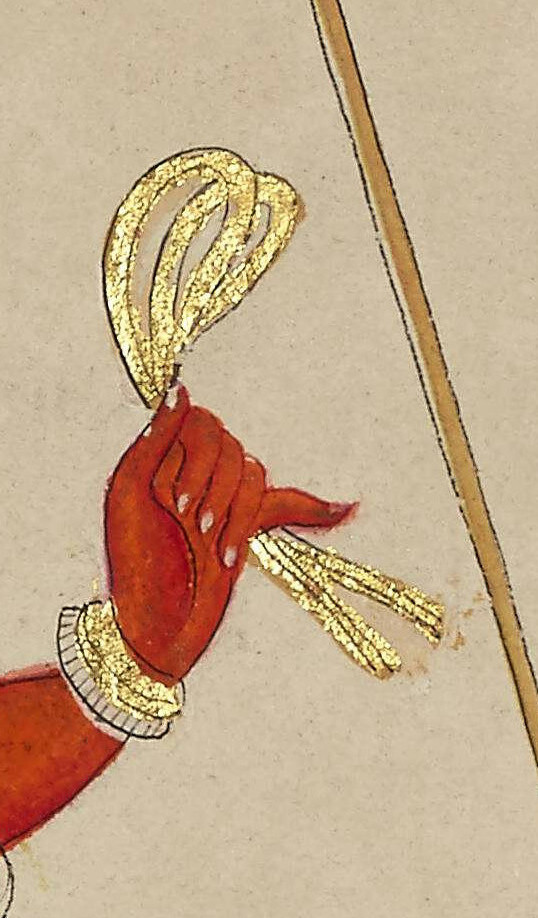Pasha (Hinduism) on:
[Wikipedia]
[Google]
[Amazon]
 Pasha (), often translated as "
Pasha (), often translated as "
File:Thajavur Ganesha.jpg, Ganesha
File:Yama on buffalo.jpg, Yama
File:Varunadeva.jpg, Varuna holding a pasha in the form of a snake
 Pasha (), often translated as "
Pasha (), often translated as "noose
A noose is a loop at the end of a rope in which the knot tightens under load and can be loosened without untying the knot.
The knot can be used to secure a rope to a post, pole, or animal but only where the end is in a position that the loop can ...
" or "lasso", is a supernatural weapon depicted in Hindu iconography
Over the millennia of its development, Hinduism has adopted several iconic symbols, forming part of Hindu iconography, that are imbued with spiritual meaning based on either the scriptures or cultural traditions. The exact significance accor ...
. Hindu deities such as Ganesha
Ganesha ( sa, गणेश, ), also known as Ganapati, Vinayaka, and Pillaiyar, is one of the best-known and most worshipped deities in the Hindu pantheon and is the Supreme God in Ganapatya sect. His image is found throughout India. Hindu d ...
, Yama
Yama (Devanagari: यम) or Yamarāja (यमराज), is a deity of death, dharma, the south direction, and the underworld who predominantly features in Hindu and Buddhist religion, belonging to an early stratum of Rigvedic Hindu deities ...
and Varuna
Varuna (; sa, वरुण, , Malay: ''Baruna'') is a Vedic deity associated initially with the sky, later also with the seas as well as Ṛta (justice) and Satya (truth). He is found in the oldest layer of Vedic literature of Hinduism, such ...
are depicted with the pasha in their hands.
Pasha is a common attribute of Ganesha, the Lord of removing obstacles; a pasha represents his power to bind and free obstacles. Yama, the god of death, uses the Pasha to extract a soul from a being's body at the time of death. In sculpture, it is depicted as two or three bound into one or a double loop.
The Sanskrit
Sanskrit (; attributively , ; nominally , , ) is a classical language belonging to the Indo-Aryan branch of the Indo-European languages. It arose in South Asia after its predecessor languages had diffused there from the northwest in the late ...
word "pasha" originally meant "knot" or "loop". In general usage, the pasha is used to bind a foe's arms and legs or for hunting animals. Pasha represents worldly attachment as well as power of a deity to capture and bind evil and ignorance. Ananda Coomaraswamy
Ananda Kentish Muthu Coomaraswamy ( ta, ஆனந்த குமாரசுவாமி, ''Ānanda Kentiś Muthū Kumāraswāmī''; si, ආනන්ද කුමාරස්වාමි ''Ānanda Kumārasvāmī''; 22 August 1877 − 9 Septem ...
explores the connection of pasha to worldly bonds.
In the Shaiva Siddhanta
Shaiva Siddhanta () (Tamil: சைவ சித்தாந்தம் "Caiva cittāntam") is a form of Shaivism that propounds a dualistic philosophy where the ultimate and ideal goal of a being is to become an enlightened soul through Shiv ...
school of Hinduism, pasha is part of the trinity Pati-pashu-pasha, meaning "Master, animal, tether
A tether is a cord, fixture, or flexible attachment that characteristically anchors something movable to something fixed; it also maybe used to connect two movable objects, such as an item being towed by its tow.
Applications for tethers includ ...
", symbolizing God, man and world. Pati is God as Shiva
Shiva (; sa, शिव, lit=The Auspicious One, Śiva ), also known as Mahadeva (; ɐɦaːd̪eːʋɐ, or Hara, is one of the principal deities of Hinduism. He is the Supreme Being in Shaivism, one of the major traditions within Hindu ...
, the patron god of the sect. Pashu is the soul or man. Pasha is the power by which Shiva leads souls to the Truth or the power of his maya
Maya may refer to:
Civilizations
* Maya peoples, of southern Mexico and northern Central America
** Maya civilization, the historical civilization of the Maya peoples
** Maya language, the languages of the Maya peoples
* Maya (Ethiopia), a populat ...
(illusion) by which he entices "unenlightened" beings.
Illustrations
References
{{Reflist Ganesha Mythological knots Hindu symbols Weapons in Hindu mythology